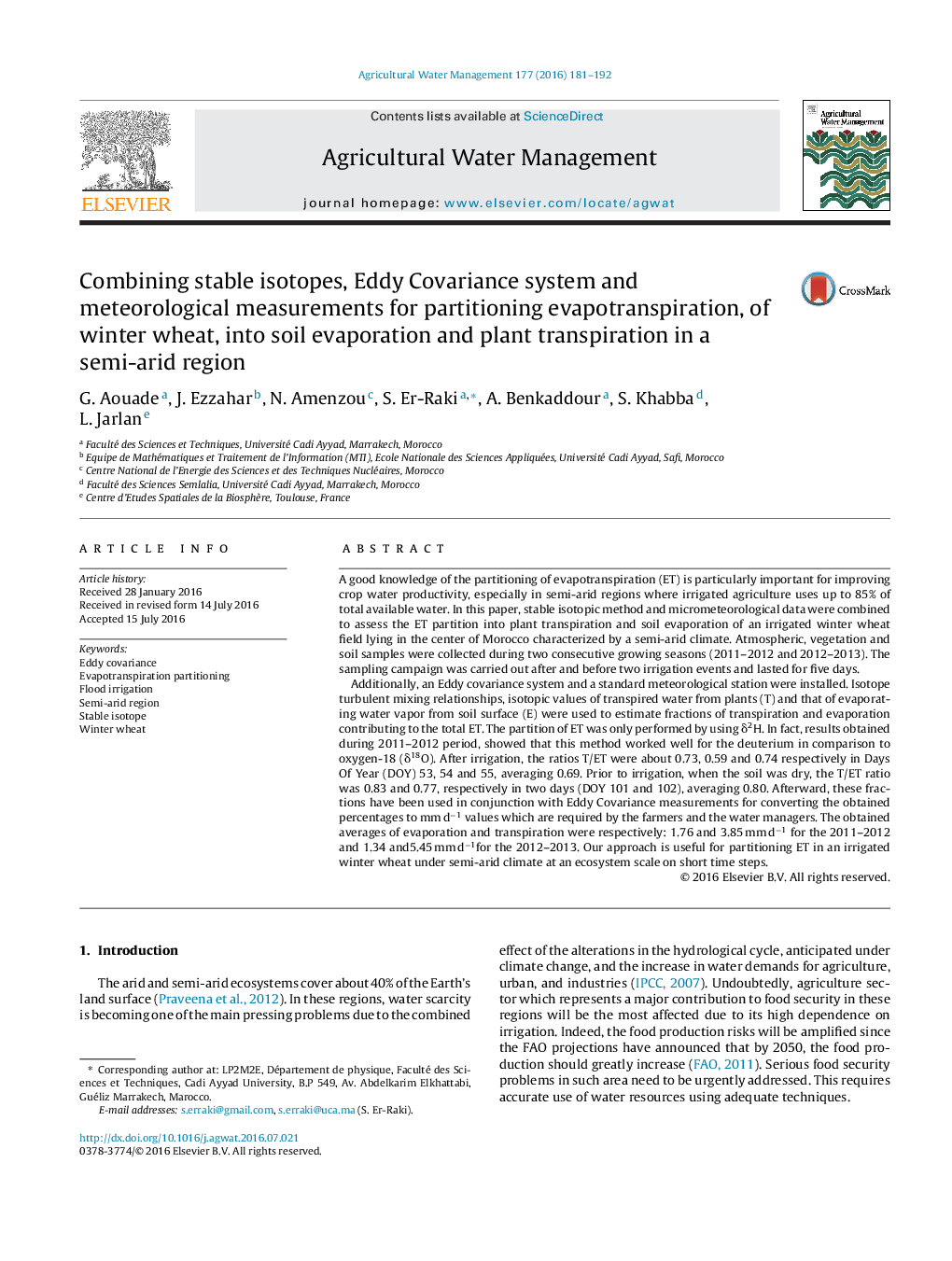| Article ID | Journal | Published Year | Pages | File Type |
|---|---|---|---|---|
| 6363401 | Agricultural Water Management | 2016 | 12 Pages |
Abstract
Additionally, an Eddy covariance system and a standard meteorological station were installed. Isotope turbulent mixing relationships, isotopic values of transpired water from plants (T) and that of evaporating water vapor from soil surface (E) were used to estimate fractions of transpiration and evaporation contributing to the total ET. The partition of ET was only performed by using δ2H. In fact, results obtained during 2011-2012 period, showed that this method worked well for the deuterium in comparison to oxygen-18 (δ18O). After irrigation, the ratios T/ET were about 0.73, 0.59 and 0.74 respectively in Days Of Year (DOY) 53, 54 and 55, averaging 0.69. Prior to irrigation, when the soil was dry, the T/ET ratio was 0.83 and 0.77, respectively in two days (DOY 101 and 102), averaging 0.80. Afterward, these fractions have been used in conjunction with Eddy Covariance measurements for converting the obtained percentages to mm dâ1 values which are required by the farmers and the water managers. The obtained averages of evaporation and transpiration were respectively: 1.76 and 3.85 mm dâ1 for the 2011-2012 and 1.34 and5.45 mm dâ1for the 2012-2013. Our approach is useful for partitioning ET in an irrigated winter wheat under semi-arid climate at an ecosystem scale on short time steps.
Keywords
Related Topics
Life Sciences
Agricultural and Biological Sciences
Agronomy and Crop Science
Authors
G. Aouade, J. Ezzahar, N. Amenzou, S. Er-Raki, A. Benkaddour, S. Khabba, L. Jarlan,
